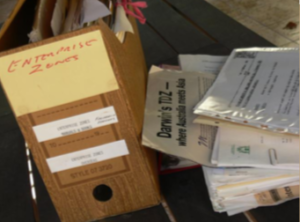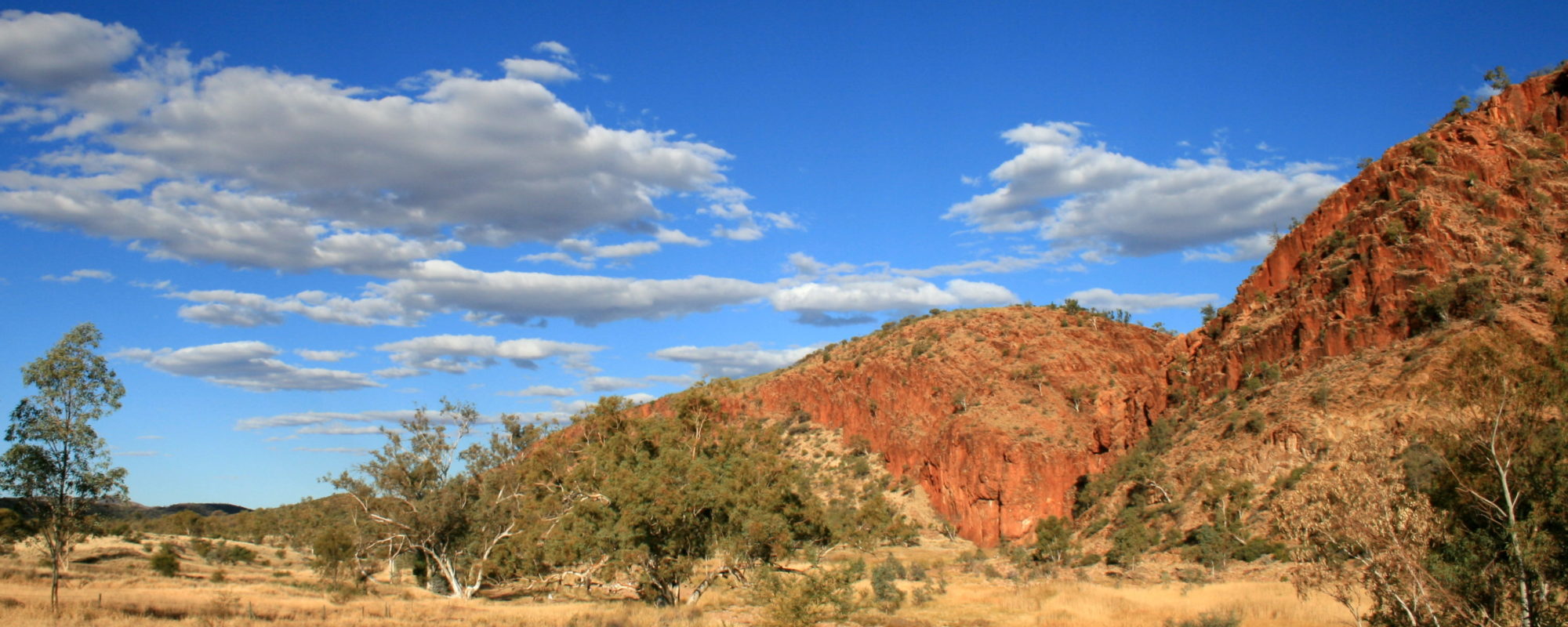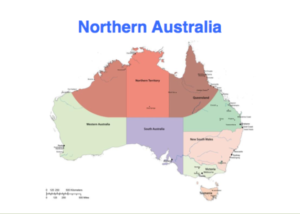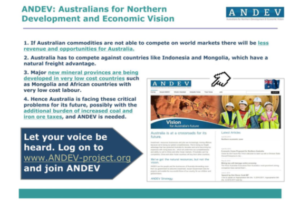Keynote Address to 3rd Annual North Queensland Resources Development Conference in Townsville, Queensland
Do you believe in miracles?
Let me tell you about one miracle that confronted me in Hong Kong back in 1978. It left me with a lasting impression. Back in the late 1970s our mining engineering firm in Kalgoorlie was the sales and service agent for the pioneering low-profile diesel truck from Sweden called the Kirina truck.
Australia’s leading mining company of that time, Western Mining Corporation (WMC), was running a fleet of these trucks in its underground decline shafts. These trucks were the lifeline for its production. Any breakdown meant no production from one of their decline shafts, and every lost hour of production cost our client $2,500 per hour, a huge amount of money in those times.
Most of the time we had these spare parts in stock and we could get them from Kalgoorlie to Kambalda in 22½ minutes flat, but about once per month we had to fly spare parts from Northern Sweden to Kalgoorlie. Now, whatever we did, we couldn’t beat 3½ weeks. That was 19 hours on a plane and 3 weeks getting them through Customs in Perth (even though we paid a high price for a Customs Clearance Agent). Well, that’s what we called ‘the normal’ by the standards of excellence that operated at the time. Such breakdowns cost our client $2,500 x 3 x 7 x 24 = $1.26M per 3 weeks.
What’s that got to do with the Hong Kong miracle?
Well, at about that time, I was passing through Hong Kong and saw in an optician’s window a sign advertising a new invention called contact lenses. So I thought I’d better have a pair, called in, got myself measured up and asked when they would be ready? They assured me 10 am the next day.
I inquired if they had an on-site technician that enabled them to give such good service. “No”, the proprietor responded. “We get them from West Germany overnight and if we get the prescriptions through to Germany on the ‘telex’ (pre-facsimile and computer days of course) by 4pm, they are always here by 10am the next day.” This service, to me, seemed incredible and I said, “But what about getting them through Customs?” With a shrug of the shoulders, he answered “But we don’t have any Customs Department to get in the way.”
This set me thinking about what role the Customs Department was playing in respect to our mining spare parts, especially when there was no customs duty payable and in no way could they ever be deemed to be a prohibited import.
About the same time, I started reading about the concept of Enterprise Zones being established around the world to cut through the bureaucracy and facilitate commerce. In short it was the birth of the term that’s now widely used—‘comparative advantage’—and centres that were establishing these Enterprise Zones, or EZs, were stealing a march on other regions which continued to be smothered by bureaucracy.
At that time, Kalgoorlie (a service centre like Townsville) was going through a tough time. The nickel industry, which had collapsed 10 years earlier, showed no signs of recovery and gold had dropped from US$860 to US$280 per ounce. Kalgoorlie was developing a regional service centre concept and picking up a fair bit of engineering work from the fast-developing Pilbara region to the north.
As President of the Chamber of Commerce, I was concerned that we needed to become an EZ and really put into practice our motto: ‘servicing the mining industry from Kalgoorlie’. So I took three months off and visited several Enterprise Zones. More importantly, I spent time with the several free-market think-tanks in the US who were actually ‘breeding’ numerous EZs. In this they had been encouraged by President Ronald Reagan whose idea was to ‘flood the world with EZs’ as a way of breaking down trade barriers and encouraging international goodwill via free and voluntary trading between nations and regions.
The concept, of course, had been taken from two millennia ago when the Roman Empire used the EZ concept for the Port of Delos, where they managed to out-compete the Port of Rhodes. How EZs evolved into the modern version, where there are now over ,000 such zones in 135 countries is outlined in the August 2010 edition of the IPA Review. The article is titled ‘Unleash the North’. It is now quite exciting to see these regions evolve after my earlier involvement in 1982.

EZ in WA
Well, you might ask if I was successful in getting the EZ concept up and running in Western Australia. The answer is ‘nearly’. The State Government became very keen and the relevant Minister for Commerce, Barry MacKinnon, showed sufficient interest to visit some zones and assemble some proposals. Subsequently, the Minister for Regional Development, Julian Grill, commissioned concept proposals to gain support at various State Government levels.
However, the labour unions were most vocal critics of our plans, insisting that it was all about importing ‘Coolie Labour’ to compete with their labour monopolies. So the idea died. But, some months later, I received a phone call from the Administrator of the Northern Territory.
“We are interested in establishing an EZ in the Northern Territory and I understand you are an expert on EZs, so can we obtain some information from you?”
So my EZ archive box was promptly couriered to Darwin. It’s interesting to see how WA responded to the news that the Northern Territory had established an EZ. WA didn’t want an EZ but were upset when NT got one!

So, what was the eventual fate of the Northern Territory EZ? It didn’t work, mainly because the NT EZ was run by the government, and we all know that the primary goal of government is not ‘improving the standard of living of its subjects’, it is simply to ‘perpetuate and extend the power that it has come to enjoy’.
EZs are about reducing power and regulations, so that’s why the NT Zone is not a good example. But, that was THEN (when there really wasn’t much happening in Australia). NOW we are serving the world and can be far more ambitious about our concept planning.
Every time I step on and off a plane, anywhere in the world, I’m reminded of the significant role that Australia is playing in developing resources around the world. Planes are full of Australian geologists and mining engineers bringing projects to reality in remote parts of the world that will out-compete our own home-grown projects, unless we can shrug off the burden of the myriads of regulations and high taxes.
There is a new competitive world out there that we need to meet head on. And we need to rediscover our ‘competitive advantages’ that will continue slipping away unless and until we cut through the morass of green tape, red tape and black tape that is throttling so many new projects here.
In March 2010, I attended the Mines & Money Conference in Hong Kong and I saw a stark example of how Australia’s competitive advantage was slipping. Of the Australian mining companies represented in the various booths at that conference, simply by asking around, I found that 65 per cent of their exploration budgets were already being spent outside Australia. That was before our Federal Government announced the Anti-Mining Tax, which has seen this percentage of exported exploration capital dramatically increase.
So how have EZs fared in other countries since their modern version appeared on the scene in the 1980s? They have been used extensively in China, specifically for their ability to stimulate business, and they are responsible, in no small way, for the remarkable Chinese economic miracle that we are currently witnessing.
In some US states, EZs have been used to encourage economic growth and investment in especially depressed communities. While the goals may vary, in general, incentives are given to businesses locating within the zone boundaries to invest capital and create jobs. The question is also being asked, “If EZs are good for business, why not apply the same principle to individuals?” In that way, not only will businesses operating within those jurisdictions be free of tax burdens, but so will individuals who choose to live in those jurisdictions.
One of the greatest problems that I see in Australia, at this time, is the extreme difficulty faced not only by companies but by individuals to create a pool of capital with which they can get established as a business or as a family unit. How difficult is it for a young couple to become home-owners without incurring a life-long mortgage commitment? A little known fact is that Australia’s ‘household debt’ is the highest in the world.
The establishment of such EZs in selected parts of northern Australia would give a tremendous incentive for such young couples to move north for a few years and work in such an environment, thereby enabling them to enjoy an ‘unencumbered life’. So, there is a noble objective behind these EZs!
Again, looking to the US model, since 1981, 43 states have implemented EZs, simply because they work. While some of these EZs are more effective than others, some places were screwed up so badly that they were beyond help.
The theory is clear
Fewer costs increase the likelihood that a business will earn a profit and be able to hire more workers. EZs that at least lower the tax burdens imposed by governments may convert an area that is otherwise considered too remote to be competitive into a financially viable region.
There are many questions that can be asked about the potential benefits from creating these EZs. For example, what does the Federal or a State Government stand to lose by exempting them from taxes? Governments may, in fact, be net gainers from such a move: the additional incentive and commercial opportunities may lead many currently unemployed people back into the workforce, no longer draining governments with unemployment payments.
How hard will it be for governments to keep track of who should be paying tax and who shouldn’t be? With the present computer surveillance on all companies and individuals, all details of our movements and activities are already ‘on file’. It’s in the context of the general idea and history of EZs detailed above that a group has been formed to study the benefits of EZs in more detail, against our high cost background.
Unfortunately the Australian public is generally unaware of the damage done by high taxing, high regulating governments. No surprise when you consider that the government is in charge of gathering and distributing statistics and distributing them to government-licensed media, for distribution through government-controlled schools. These are still the prime sources for public information even though the ABS, Treasury, The Productivity Commission, the think-tanks, etc all have their own websites.
If the public received the uncensored facts we would have had a public revolt long ago. Quite a few commentators and think tanks are already echoing the words of Thomas Jefferson who once said:
“I hold it, that a little rebellion, now and then, is a good thing, and as necessary in the political world as storms are in the physical world.”
These words echo the level of exasperation felt by many Australians as they try to go about their regular productive business activities; and this is the key thought I wish to share with you today:
Australia boasts that it has a highly educated population, but if that were true, it would be obvious to all that if you tax something, you get less of it. If you subsidise something, you get more of it.
In Australia, we continue to tax work, growth, investment, employment, savings, productivity, initiative and ability, whilst subsidising non-work, consumption, welfare and debt. No wonder we are getting less of the former and more of the latter!
So let me tell you how you can join in this peaceful revolt, already joined by over 50 companies, plus their senior executives, in developing this regional zone concept for Northern Australia.
The group behind this plan is known as Australians for Northern Development & Economic Vision, or ANDEV. We invite you to go to the website and join ANDEV. The concept to develop Australia’s Northern Region is outlined in more detail in the following slide set that is being distributed to you all, and is on the ANDEV website.



1 Comment
[…] to the Annual North Queensland Resources Development Conference in Townsville, entitled Northern Australia: The Next Powerhouse of the Global Economy? One other quick contribution is the video presentation by Surse Pierpoint: Free-Trade Zone at […]